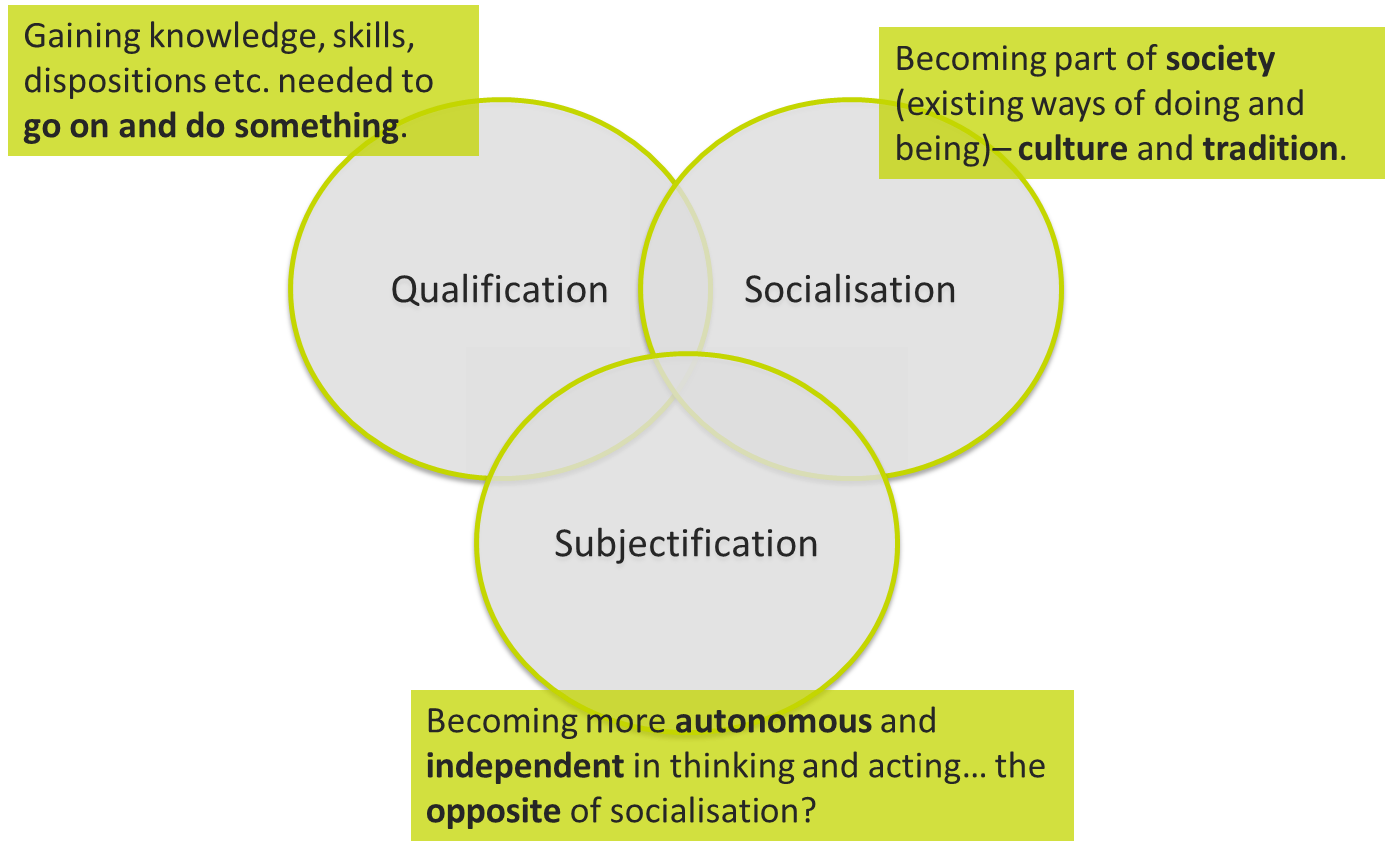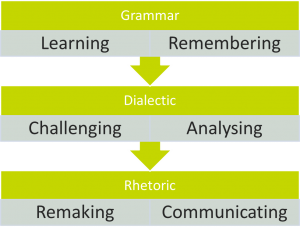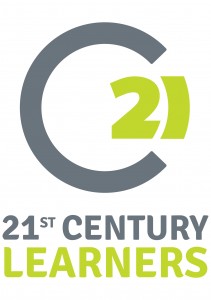Biesta, the Trivium and the unavoidable responsibility of teaching
In a postmodern view, ‘truth‘ can be thought of as an event that disrupts our thinking; if we are open to it it can lead us into a better future (Caputo, 2013). Such events are happening all the time in the world of education; the challenge is to remain open to them, to avoid identifying too strongly with one paradigm – not to become a card-carrying ‘traditionalist’ or ‘progressive’, for example.
The work of Gert Biesta can support this ‘openness’. Biesta helps us to a wider view of education by focusing on the question of purpose – putting the ‘why’ of education before the ‘how’. He suggests three broad domains of educational purpose which are represented in the Venn Diagram below:
It is best to leave it to Biesta to explain the philosophical underpinnings of these domains (Biesta, 2010). There is a simple truth here, however: education has multiple purposes. Sometimes these purposes are in harmony, at other times they are in tension. This framework can be a powerful one for exploring and then articulating your own vision of a ‘good education’. But take care – this is a dangerous road. Once you start along it you must abandon the possibility of deferring to others on decisions about teaching and learning. No longer can you rely on an interpretation of what Ofsted might regard as ‘outstanding’, or allow the National Curriculum to entirely determine the subject matter that your children engage with. You can’t even entirely depend on evidence of ‘effective practice’. This is because you must accept the responsibility of asking (and answering) the question ‘Effective for what purpose, and for whose needs?‘ An effective curriculum for qualification may not give children the cultural capital you think they are owed. Effective pedagogy for helping children to find their own voice and allowing them to make their own ‘unique’ contribution (which you might believe to be important) may not be an effective way of gaining and retaining information. You have to embrace these tensions, and make judgments about what is right for your children, even if that risks missing a few data-driven targets.
Another educational thinker who embraces plurality in educational aims is Martin Robinson. In his book ‘Trivium 21c‘ (Robinson, 2013) (a work that sets out a vision for a liberal-arts based education) he draws our attention to a classical educational mantra which is represented in the diagram below:
Robinson’s book provides a rich discussion of these ideas, but in in simple terms grammar might be thought of as foundational subject knowledge; a common currency that must be gained before engaging in critical analysis. However, this grammar can be taught in a way that keeps it open to the possibility of challenge (the event) in the dialectical phase. Once dissected, our learning can be re-assembled in a form suitable for application to the future and this new understanding can be celebrated and communicated in a variety of media through the art of rhetoric.
I find the work of Biesta and Robinson to be complementary. When trying to decide on a rich ‘grammar’ for our children, a focus on both ‘qualification’ and ‘socialisation’ is useful. In challenging, analysing, remaking and communicating our learning we can not only deepen conceptual understanding, but also keep open the possibility of children making their beginnings for others to take up – of joining the ‘conversation of mankind‘.
And perhaps all of this opens up a route to the reconciliation of ‘traditional’ (memory, foundational knowledge and understanding) and ‘progressive’ (critical thinking, creativity) paradigms. There is a place for fully guided instruction and for open dialogue; a place for spaced learning and for the exploration of life through drama. But it is for us to be able to justify our choice of any of these approaches based on our purposes – to tell our story with passion (whilst always remaining open to the possibility that we are wrong).
For my part, this reading has given me a framework for selecting pedagogical approaches and a language for justifying my choices (even if this means that I don’t always tick the boxes of an ‘outstanding’ lesson). And I have become more convinced than ever of the need to look beyond the (very important) purpose of qualification. If all we are doing is preparing our children to ‘go on and do something’ – to conform to the existing social paradigm – in a way that fails to reveal to them the richness and complexity of life, that fails to inspire them to question their own purposes, then we are failing them profoundly. As someone once said, ‘the unexamined life is not worth living‘ – I think that goes for children and their teachers alike.
References
Biesta, J. J. (2010) Good Education in an Age of Measurement. Boulder: Paradigm.
Caputo, J. D. (2013) Truth. Philosophy in Transit. London: Penguin.
Robinson, M. (2013) Trivium 21c. Carmarthen: Independent Thinking Press.




